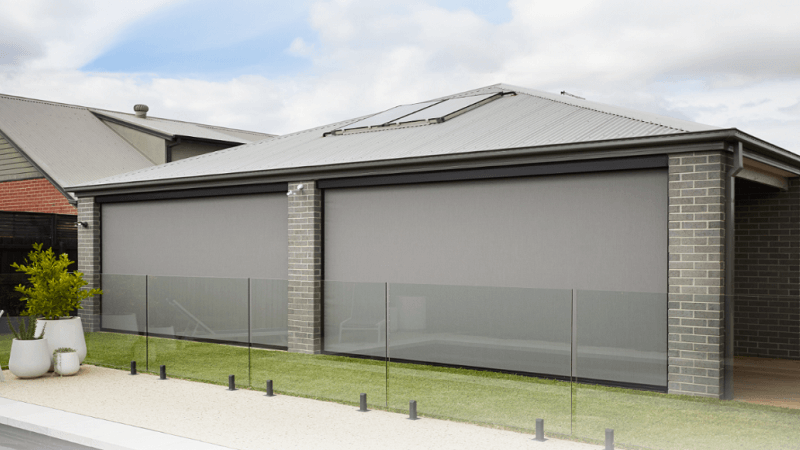If you’re looking for a way to make your outdoor areas more comfortable, a retractable awning is worth considering. It gives you shade on demand, then folds away when you want the sky open. Unlike fixed structures, it adapts to how you live.
Where are they used?
Retractable awnings suit a wide range of spaces. You’ll often see them:
- Covering patios and decks
- Extending over balconies
- Providing shelter beside pools
- Shading outdoor dining or lounge areas
If you like entertaining, an awning keeps the table cool and dry so a summer lunch isn’t spoiled by harsh sun or a passing shower. And because the fabric folds away neatly, it won’t block natural light from coming indoors. That’s why they’re especially handy for smaller homes and units where permanent roofing isn’t an option.
The Australian Government’s YourHome guide on external shading also explains why adjustable shade like this improves comfort and helps manage heat.
What are the benefits?
The biggest draw is control. On hot afternoons you can extend the awning to cut heat and glare, then retract it in the evening for fresh air and open views.
Other advantages include:
- UV protection: Less fading and damage to outdoor lounges, timber, and even flooring indoors.
- Comfort: Shaded spaces feel more inviting, encouraging you to use your backyard more often.
- Furniture life: Prevents early wear, saving money on replacements over time.
And it’s not just comfort. The Cancer Council’s shade guide highlights how proper shade is one of the simplest ways to reduce UV exposure at home.
How do they operate?
There are two main options:
- Manual: A hand crank you wind in or out. Simple and reliable.
- Motorised: Run by a wall switch or remote. Many can also link to smart home systems for control from your phone.
Motorised awnings are popular for larger areas or when convenience is a priority. Some models include sensors that automatically retract when winds pick up or extend when the sun is strong, adding extra safety and comfort.
For a deeper look, this guide on the retractable awning explains styles, operation, and what to consider when choosing one.
How much do they cost?
Prices vary with size, fabric, and operation type. As a general guide:
- Entry-level manual awnings start from a few thousand dollars.
- Motorised versions with sensors sit higher on the scale.
The upfront spend may feel significant, but it often pays off. You protect your outdoor furniture, get more use from your home, and add value if you ever sell.
Can they cope with wind and rain?
Retractable awnings are designed to handle day-to-day conditions. Most fabrics are water-resistant, so light rain isn’t an issue. And UV protection is usually strong, which is often more relevant for Australian homes.
They’re not made for storms or heavy downpours. Leaving the awning extended in strong winds or rain can cause damage. That’s where motorised models with wind sensors are helpful — they retract automatically to prevent strain on the frame.
Types of retractable awnings
Not all retractable awnings are the same. The right choice depends on your space and how you plan to use it.
- Folding arm awnings: Popular for patios and decks, these extend out to create shade over open areas without the need for posts. They retract neatly against the wall when not in use.
- Retractable roof awnings: Systems like Sundream and Sintesi cover larger areas, giving a roof-style effect. They’re ideal for outdoor dining or entertaining zones where year-round use is important.
- Window awnings: Designed to shade windows directly, these keep indoor spaces cooler while protecting furnishings from glare and fading. They’re a practical option for homes exposed to harsh afternoon sun.
- Outdoor blinds: These are great for enclosing outdoor spaces like patios, they block wind, sun, and light rain while still allowing you to enjoy your view.
Each type has its own purpose, and many homes use a mix depending on the layout.
Choosing the right style
When deciding, think about:
- The main times of day you’ll want shade
- Whether motorised control is worth the extra spend
- How exposed your area is to wind
- The look and colour that suits your home
Retractable awnings are one of those upgrades that make outdoor living more practical. With comfort, flexibility, and a neat look, they let you enjoy your home in more ways than one.
